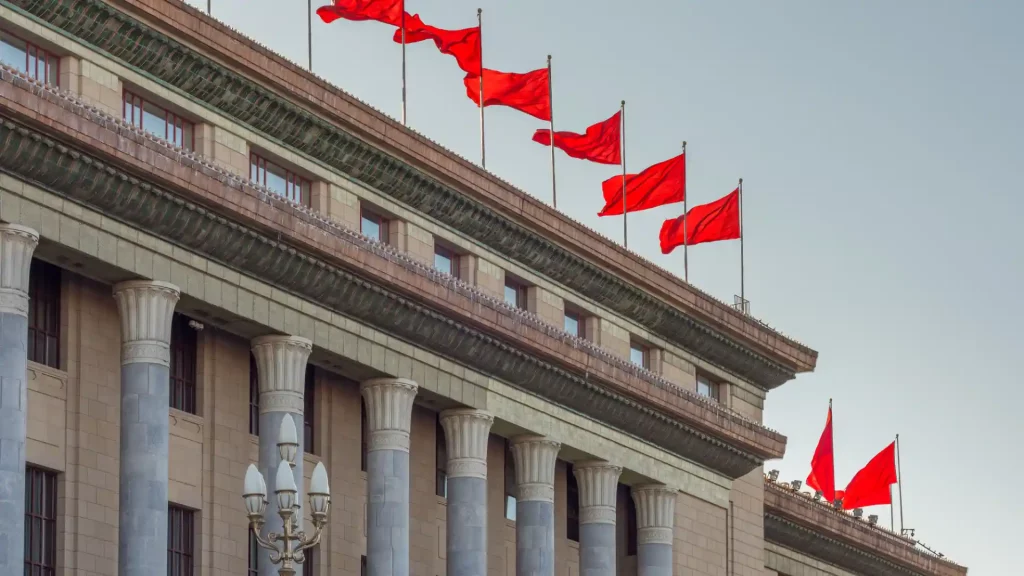From the pool of hurdles to recover, China sets a challenging GDP focusing on National Defense and 5% GDP Growth at NPC.
Amidst regional tensions and demographic challenges, China has set a desiring sights on a GDP growth target of 5%. Aligning with analysts’ projections for another year of modest economic ambitions.
Premier Li Qiang, addressing the National People’s Congress (NPC), highlights the formidable obstacles ahead, including global economic volatility, regional disputes, and domestic issues like subduing consumer demand and a labor market.
In terms of economic targets, China has set a consumer inflation target of 3% and GDP is expected to grow around 5%, with a deficit target of 3%, focusing on increasing the jobless rate to 5.5% with the plan of creating 12 million urban jobs. This valorous growth target resulted in the drop of Chinese stocks in Hong Kong just when investors brushed off the government’s declaration
While a draft of the government work report acknowledged “intensifying geopolitical conflicts” as a drag on China’s economic prospects, this mention was notably absent from Li’s final speech. The decision to omit this reflects the strategic move to maintain a balanced narrative amidst ongoing tensions. Li acknowledges the challenges and requests for policy support and joint efforts from all fronts to help them recover.
The 5% growth target mirrors that of the previous year, which marked a cautious approach as China emerged from stringent zero-COVID measures that took a toll on its economy. However, with the pandemic’s impact waning, attention has turned to more entrenched challenges, such as an aging population and a shrinking workforce.
Despite official reports indicating a 5.2% GDP growth in 2023, independent economists suggest a more tempered reality, with estimates as low as 1.5%. This discrepancy underscores the complexity of assessing China’s economic performance amidst evolving structural dynamics and shifting policy priorities. Achieving the 5% growth target for the current year may prove ambitious, given these challenges, as well as the evolving landscape of China’s economic priorities.
China has unveiled its budgetary plan for the upcoming fiscal year, aiming for a deficit of 3% of its economic output, down from 3.8% last year. A significant component of this plan involves issuing 1 trillion yuan ($139 billion) in special ultra–long–term treasury bonds, which are excluded from the budget.
While China aims to curb industrial overcapacity, there is also a focus on tech innovation and upgrading industries mentioning specific industries like new energy cars, hydrogen power, new material, innovative drugs, and commercial aviation. Xi’s mantra since 2019 which said, “housing is for living in, not speculation” was excluded from the report for the first time, aligning with Xi’s vision for “new productive forces”. Plans include lifting foreign investment restrictions in the manufacturing sector and developing strategies for emerging technologies such as quantum computing, big data, and artificial intelligence.
One notable aspect of the budget is the allocation for defense spending, which is set to increase by 7.2% this year, mirroring the previous year’s figure. This move is closely monitored by the U.S. and the neighboring countries amidst escalating tensions, particularly concerning Taiwan.
Under President Xi Jinping’s leadership, China’s defense budget has doubled over the past decade, marking the 30th consecutive year of increasing expenditure. Notably, references to “peaceful reunification” with Taiwan have been omitted from the report, signaling a shift from China’s approach.
International institutes like the International Monetary Fund (IMF) forecast more conservative growth projections for China, with estimates hovering around 4.6% for the coming year. This cautious outlook reflects a recognition of the multifaceted challenges facing China’s economy and the need for measured responses to ensure sustained, albeit moderated growth in the years ahead.
